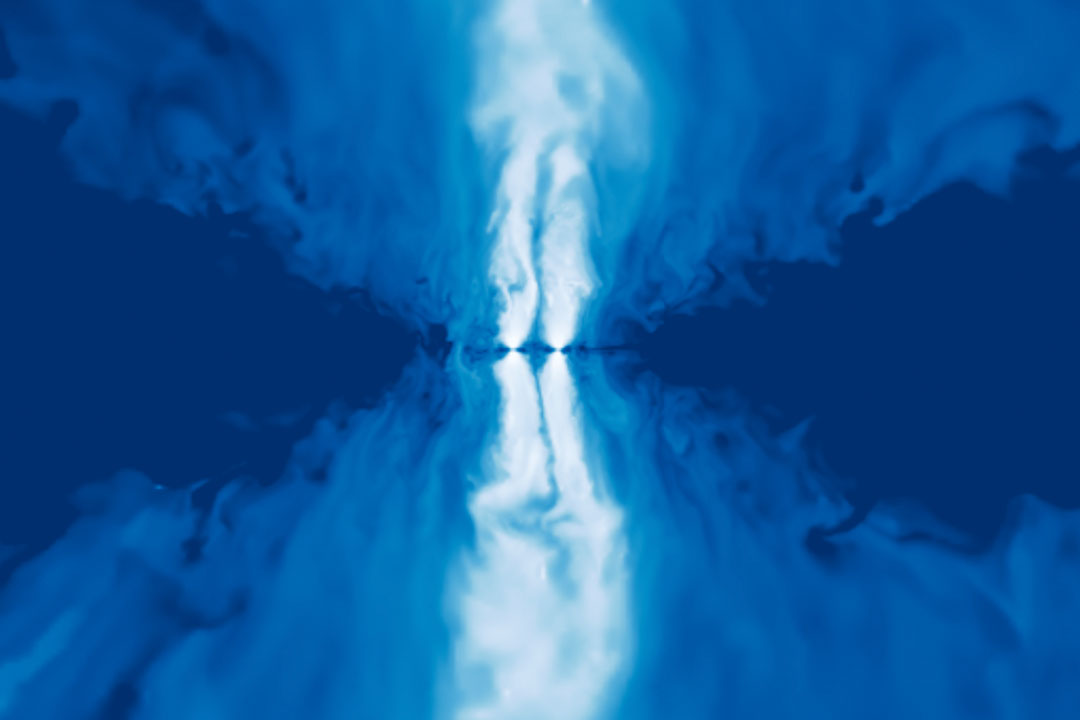Manuela Campanelli to lead research team studying electromagnetic signals from merging supermassive black holes
Share on FacebookShare on TwitterShare on LinkedInShare on RedditShare via Email

Lorenzo Ennoggi and Jay Kalinani/RIT
RIT scientists have received a NASA grant to study supermassive black holes by creating advanced simulations that will help identify and understand cosmic events. This visualization is part of the team’s early work.
Rochester Institute of Technology scientists will be the lead researchers on a $1.8 million NASA grant to study electromagnetic signals from merging supermassive black holes.
RIT’s Manuela Campanelli, Distinguished Professor in the School of Mathematics and Statistics and director of the Center for Computational Relativity and Gravitation, will lead the collaborative project with help from Yosef Zlochower, professor in the School of Mathematics and Statistics. The project will also include researchers from the University of Idaho, Johns Hopkins University, and the Goddard Space Flight Center.
The team will combine astrophysical knowledge with state-of-the-art simulations to study the gas flows surrounding binary black hole systems. The main goal of these simulations is to accurately predict the light signatures associated with these binary black holes, which is crucial for identifying and understanding these mysterious cosmic events. The findings will provide valuable insights into the formation and evolution of galaxies and contribute significantly to advancements in astronomy.
“This project aims to drive major steps forward in our understanding of supermassive black holes spiraling into one another at the core of a merged galaxy,” explained Campanelli. “The combined expertise of our team will pave the way for new discoveries.”
The research will have a profound impact on understanding cosmological evolution and will play a critical role in identifying and locating supermassive black hole binaries. Advanced simulations and the world’s largest supercomputers will support the investigations. Lorenzo Ennoggi, an astrophysical sciences and technology Ph.D. student, is also part of the RIT team.
"We have developed all the necessary tools to perform these very challenging simulations, and we are ready to start our investigations,” said Ennoggi. “This is unexplored territory, so whatever we find will be entirely new."
Studying how black holes merge when galaxies collide will help scientists further understand how galaxies form and evolve. By focusing on the behavior of gas and matter as they are drawn into black holes at various stages of the galaxy merger, the research team aims to create the most accurate and realistic predictions of light signals to date.